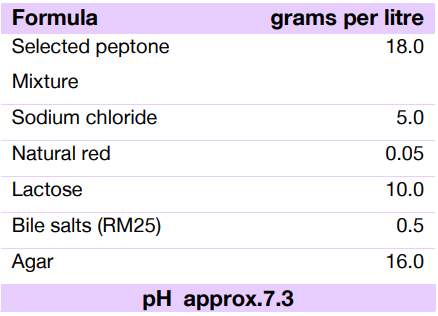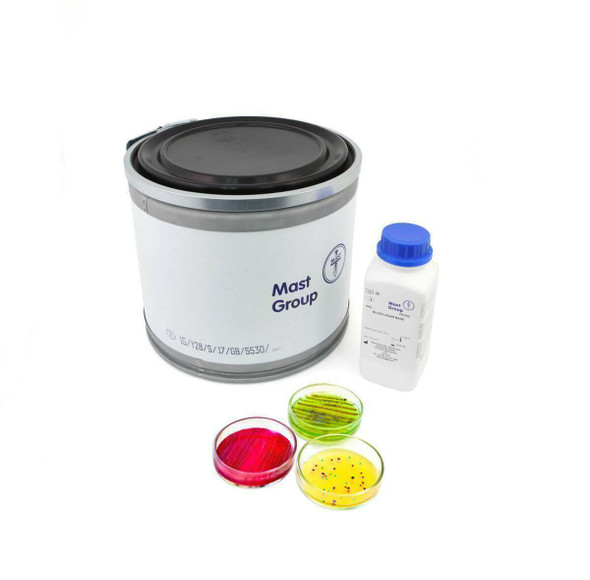Description
MacConkey Agar | DM141
A selective medium for the isolation and identification of enteric bacteria.
MAST MacConkey Agar is a selective and differential medium for the isolation of pathogenic organisms from water, food and
clinical specimens. The medium is a modification of the original neutral red-bile salt agar of MacConkey,1 and has excellent
selective properties due to the inclusion of highly purified bile salts but promotes good growth of staphylococci, salmonellae and shigellae. Colour differentiation of lactose and non-lactose fermenting organisms is good and enterococci appear as intense magenta colonies which are easily identified. MacConkey Agar, DM141, will however allow Proteus spp. to swarm and so in those instances where proteus may be found e.g. wound swabs, MacConkey Agar without salt (DM140) is more applicable. DM141 has many applications, particularly in the examination of water supplies where it is used for direct counts in poured plates or for subculture and differentiation of organisms producing acid and gas in MacConkey Broth (DM150) at 37°C.
2. Technical Formula*

3. Directions
1. Suspend by swirling 49.5g of powder in 1 litre or the contents of the sachet in the stated volume of distilled or deionised water.
2. Autoclave at 121°C (15 p.s.i.) for 15 minutes
3. Mix well before pouring.
4. In Use
In the examination of faeces, DM 141 should be used in conjunction with other selective media such as D.C.A. (DM130
and DM131) or Brilliant Green Agar (DM105-1 or DM105-2). The medium supports the growth of staphylococci and has been used for urine culture, but a nonselective indicator medium such as C.L.E.D.(DM110) is to be preferred for this
purpose.
After incubation for 18-40 hours any lactose fermenting coliforms that grow produce pink colonies, and non lactose fermenters e.g. most salmonellae and shigellae, produce colourless or pale yellow colonies. Staphylococci appear as small opaque pink colonies and enterococci as small magenta colonies.






